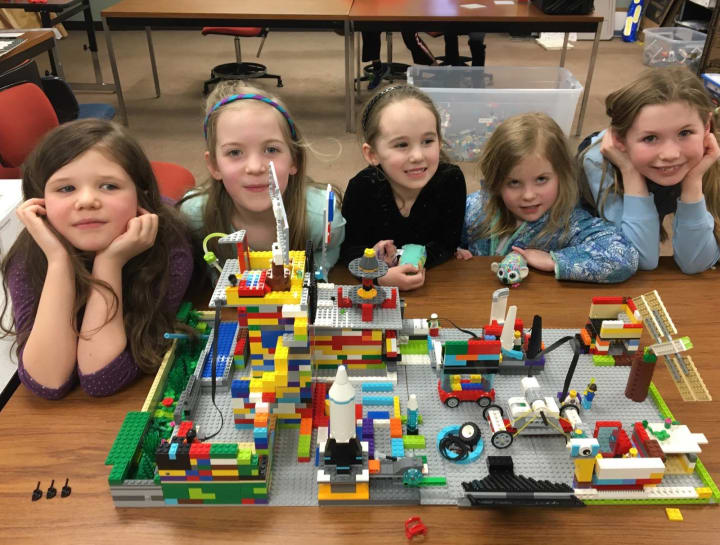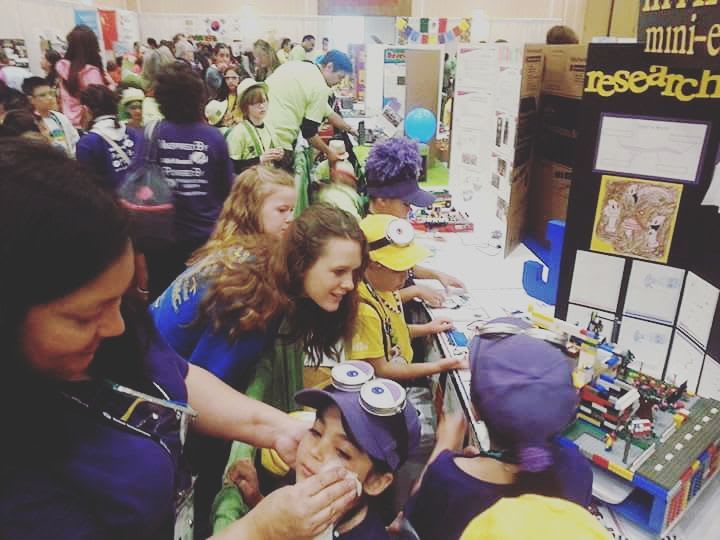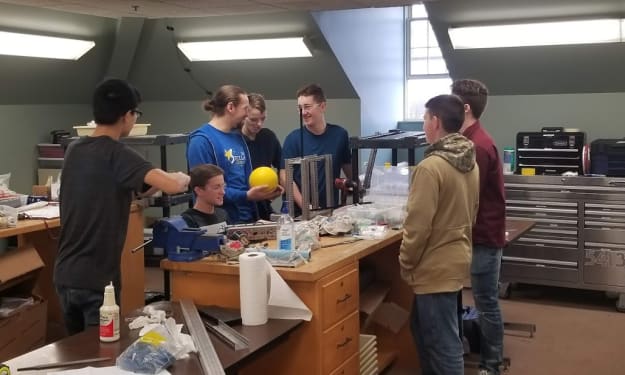Just One Robot
When you give a kid a robot...

FIRST (For Inspiration and Recognition of Science and Technology) is a worldwide non-profit organization that provides competitive robotics programs for students of all ages. Focusing on the importance of hands-on STEM (science, technology, engineering, and math) education, FIRST is a platform for young engineers to discover their passions and pursue their dream careers. From circuitry to designing for manufacturing to programming, students on FIRST teams get to experience all aspects of robotics engineering.
But why do we do it? Why should we aggressively fund hands-on STEM education and encourage all students to join robotics programs, whether they are interested in a STEM career or not?
And what happens when you give kids all of these tools to succeed and then send them off to middle school, high school, college, or even the workforce? What do they do with all of it? I mean, it's just a bunch of robots... right?
Wrong.
There was a student in one of the youngest levels of FIRST through the organization I'm part of. She started learning about engineering, design, and programming, and asked for a Lego Mindstorms kit for her 9th birthday so she could practice for robotics even when she was at home. One year she was on the team, the theme was environmentalism and creating a sustainable world. Something in her lit like a fire, and she is now 13 years old and designing a go-kart that runs on coffee grounds as alternative, sustainable fuel. At 13 years old, she cares so deeply about the environment, about her planet, all because of a robot.

I knew another student who joined the junior high level of our team. He was incredibly shy and wouldn't really speak up during meetings. The other students on his team knew he was smart, and immediately asked for his input and advice on their robot design and programming. He changed almost overnight because he finally found a group of people who cheered him on and gave him a place to be himself. He is graduating high school this year as one of the leaders of our team and a role model to the younger students. He found friendships, family, that changed his life, all because of a robot.
I was 14 years old when I found robotics. After years of bullying and frustration, I had retreated into my interests and refused to open up. My teammates on my robotics team welcomed me with open arms regardless, and gave me a chance to be myself and have somewhere to call home. In a time when I was feeling a lot of darkness, robotics was my light. My personality and approach to life did a full 180 after just a few months with my robotics team. I grew into a confident leader, a strong communicator, and an advocate for minority voices in STEM all because of a robot.

It's really not just a bunch of robots. Behind every robot is a team of dedicated students with dreams to move mountains and turn the world on its head. Those dreams become a reality all because of just one robot.
The end goal is not to have every single student pursue a career in STEM. That is obviously unrealistic and would frankly waste a lot of the gifts that robotics programs give to students. Outside of STEM, students learn valuable communications, interpersonal, and leadership skills from robotics programs. Students are also encouraged in creative problem solving, strategic analysis, and critical thinking.
If the career and life skills aren't enough to convince you that robotics programs are important, then let the stories of the students I mentioned above do that. And these stories aren't even unique. I know countless individuals whose lives were changed through these programs. I even know people whose lives were saved because of these programs.
These stories are the reality of what happens when you give a kid a robot.
Because when you give a kid a robot, it's usually broken. And when the robot is broken, they have to ask the person next to them for help. And when they talk to the person next to them, they become friends. And when they become friends, they want to make other friends to help them fix the robot. And when other friends come to help, they start to form a team. And when they start to form a team, they want to go to a competition. And when they go to a competition, they work with other teams to make each other better. And when they make each other better, they form alliances. And when they form alliances, they have a community across the world to help them solve problems. And when they have a community across the world, they start to care about the rest of the world outside of their team. And when they start to care about the rest of the world, they want to fix it. And when they want to fix it, they find the friend they built the robot with, and they get to work. And when they get to work, bridges are built, relationships are healed, and problems are solved.
And when problems are solved, it's because you gave a kid a robot.
About the Creator
Gabriella DeYoe
I'm a freelance writer with a passion for STEM education and the arts.






Comments
There are no comments for this story
Be the first to respond and start the conversation.